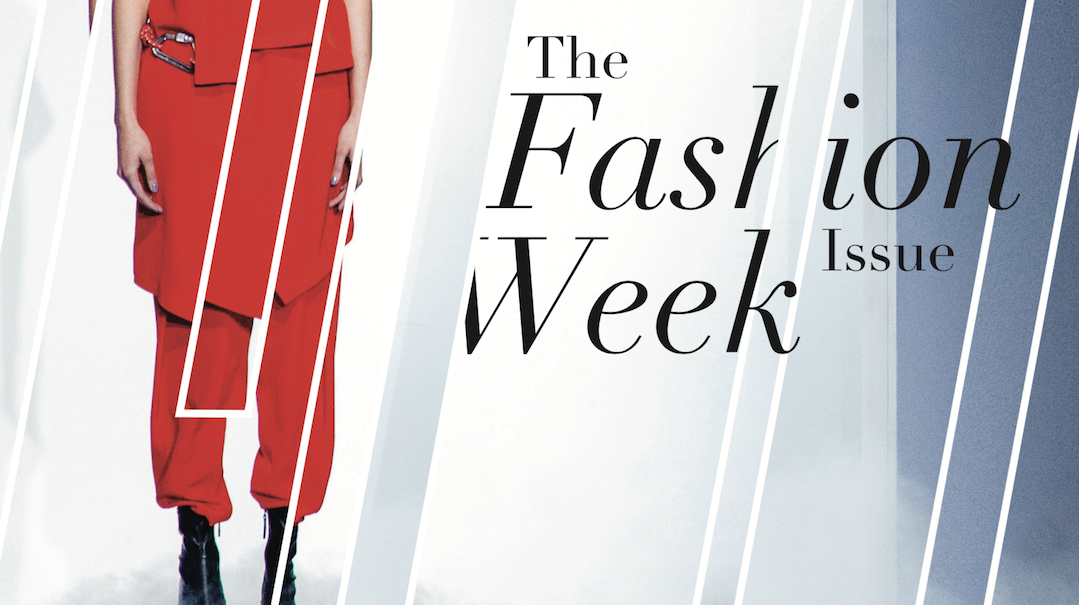Sartorial Network
February 21, 2017
The landscape of New York Fashion Week has evolved over the years as its events have garnered more attention and exposure. Social media, blogging and the growing presence of influencers have cut down the barriers of exclusivity and made Fashion Week an event that anyone with a smartphone — or even internet — can access. Fashion week coverage reaches all main social media platforms — Facebook, Twitter, Instagram and Snapchat — but the content being shared isn’t of the quality it used to be.
When front rows were carefully curated with A-listers and fashion editors were at the top of the fashion hierarchy, Fashion Week was an exclusive event for industry insiders and celebrities. It was originally an event for buyers, retailers and editors to view collections a few months before they reached stores. Coverage was dependent on media outlets and magazines — the audience attended to enjoy and absorb the experience, not to capture it for their followers. Professional writers and photographers created the content that would be released following the shows — credible reviews were written by top editors at Vogue, Women’s Wear Daily and other publications, and images were taken by professional photographers, not snapped on iPhone cameras.
Now, with the inclusion of bloggers and influencers, many of them only self-proclaimed fashion mavens, there is an imbalance within the fashion industry. Though there may be a symbiotic relationship between influencers and brands, the collections have taken a backseat to the parade of people in attendance. Fashion Week has become a production where bloggers, influencers and people who can afford tickets promote themselves and not the collections. The design process, construction and hard work that into creating a collection are left underappreciated and lost among selfies and shameless self-promotion.
This Fall/Winter 2017 season, one of the shows that was most successful was also the least broadcast over social media. Marc Jacobs asked his audience to refrain from using phones during the show, turning the attention back to the clothing. The pared-down approach to his runway of polished street-style garments turned meta when the models walked off the runway and onto the street, posing in a tableau as they took their phones out to snap pictures of the onlookers, who did not hesitate to share the scene on social media. Jacobs catered to the urge to post but was also able to pivot the audience to the runway, allowing them to have a genuine experience seen through their eyes and not their phone screens.
In sharp contrast to Jacobs’ show, Jeremy Scott’s F/W 2017 runway embraced excess. First, there was an inordinate wait of 45 minutes preceding the show because of Kylie Jenner, her camera crew for “Keeping Up with the Kardashians” and the hordes of people lined up outside of the venue hoping to catch a glimpse of her. Then, there was the over-booking for the show that led to seat-holders and editors from Elle, Cosmopolitan, Glamour and other major fashion publications to be turned away at the door. And while the collection was as outrageous and avant-garde as expected from Jeremy Scott, the debacle that delayed the show exemplifies how the fashion industry has begun alienating its own in favor of the millennial in-crowd.
No longer are the days under the big, white tents of Bryant Park covering the circus of celebrities, designers and industry-insiders. Nor are they at Lincoln Center, where fashion week became a de-localized beehive of fashion-people buzzing all over Manhattan. Now NYFW is physically based at a few downtown venues.
Virtually, fashion week lives on a sartorial network of content posted mainly by amateur bloggers, influencers and social media users, over-filtered and unrefined. Sure, the amateurs deserve a space at Fashion Week, but when they take precedence over industry professionals, it cheapens the experience for everyone. The question of who was at Fashion Week becomes more important than the question of what was presented. NYFW is a Holy Week for fashion enthusiasts, intended to celebrate the designers, the spectacle and the artistry. Let’s bring the spotlight back to the creators and the creations, instead of pointing the flashbulbs at the audience.
A version of this article appeared in the Tuesday, Feb. 21 print edition. Email Sophie Shaw at [email protected].

